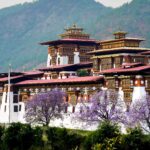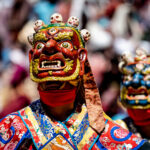
“Tsechu is more than a festival; it is a vibrant expression of Bhutan’s rich cultural and spiritual heritage.” Atsara Tours.
Tsechu, one of the most vibrant and significant festivals in Bhutan, is a spectacular celebration deeply rooted in the country’s rich cultural and religious heritage. Held annually in various districts (dzongkhags) across Bhutan, Tsechu, which translates to “tenth day,” commemorates the birthday of Guru Rinpoche (Padmasambhava), the revered 8th-century Buddhist master who introduced Tantric Buddhism to Bhutan.
Historical Significance
Guru Rinpoche is credited with subjugating malevolent spirits and demons, establishing Buddhism as the dominant spiritual force in the region. The Tsechu festival, thus, serves not only as a tribute to his accomplishments but also as a means of educating people about the values and teachings of Buddhism. Each district’s Tsechu is held on the 10th day of a specific month in the Bhutanese lunar calendar, often coinciding with important dates in Guru Rinpoche’s life.
Festivities and Rituals
The Tsechu festival is renowned for its vibrant masked dances (cham), intricate costumes, and elaborate rituals performed by monks and laypeople. These dances, which narrate various stories from the life of Guru Rinpoche and other Buddhist saints, are both mesmerizing and symbolic, intended to bring blessings, protect from misfortune, and impart moral lessons.
Masked Dances
The highlight of Tsechu is the array of cham dances, each with its own unique significance. Some of the most popular dances include:
- Guru Tshengye (Eight Manifestations of Guru Rinpoche): This dance depicts the eight different forms assumed by Guru Rinpoche to subdue evil forces and aid sentient beings.
- Shana Cham (Dance of the Black Hats): Performed to drive away evil spirits, this dance involves monks wearing large black hats with wide brims.
- Drametse Ngacham (Dance of the Drums from Drametse): Originating from the Drametse Monastery, this dance is performed with drums and features vigorous, rhythmic movements.
Costumes and Masks
The costumes worn during Tsechu are made of rich brocades, silks, and elaborate embroidery, often in vibrant colors. The masks, intricately crafted and painted, represent various deities, animals, and mythical creatures. These costumes and masks are not only visually stunning but also imbued with deep spiritual significance, transforming the dancers into living embodiments of the divine beings they portray.
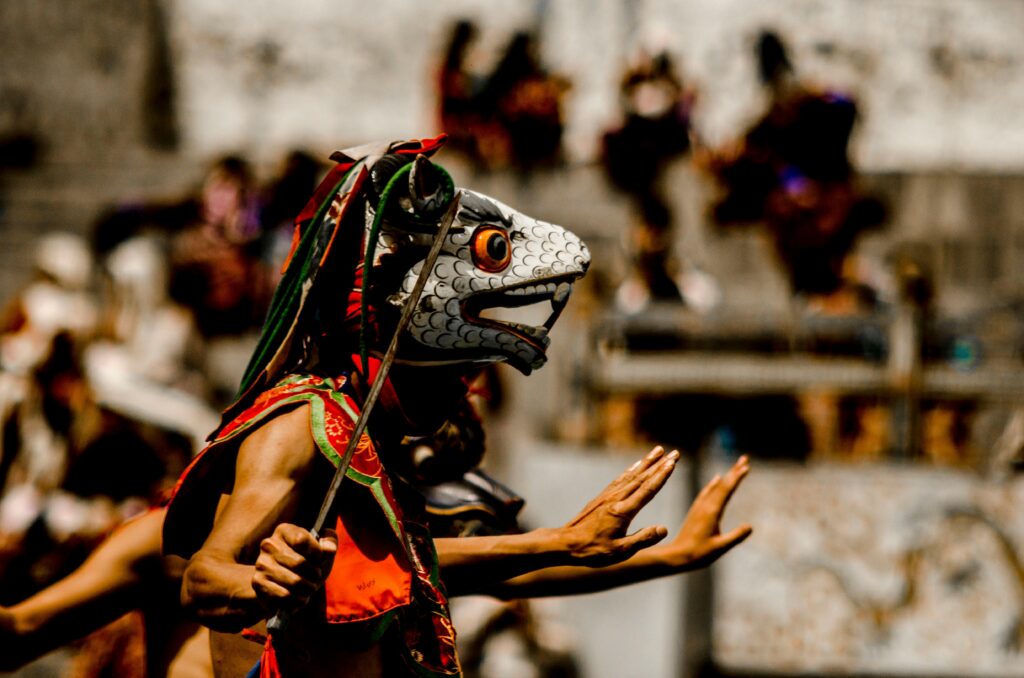
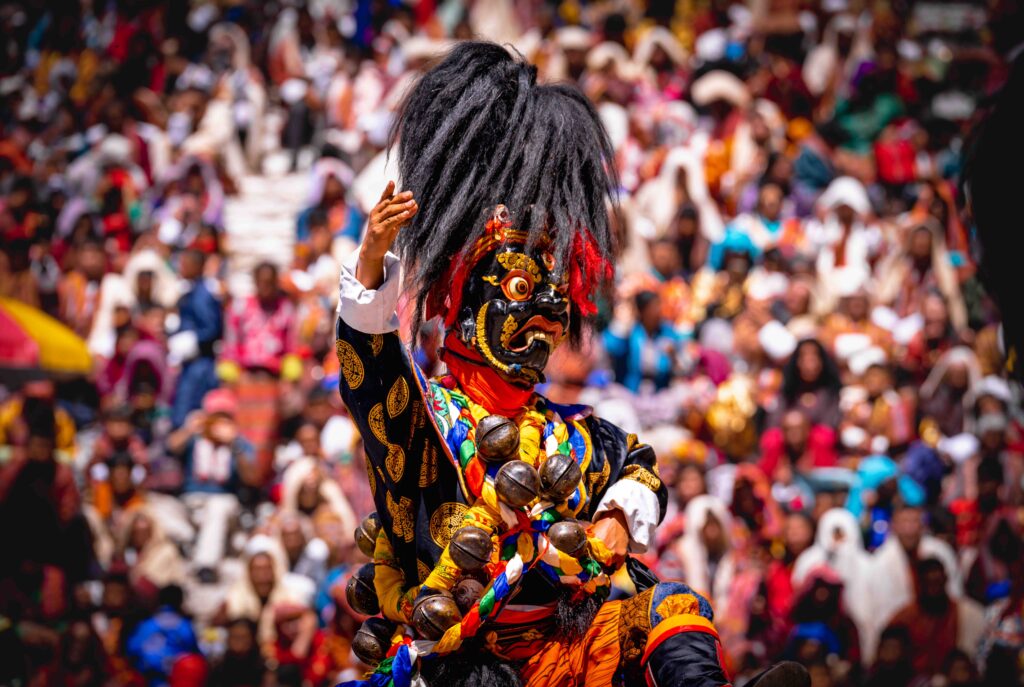
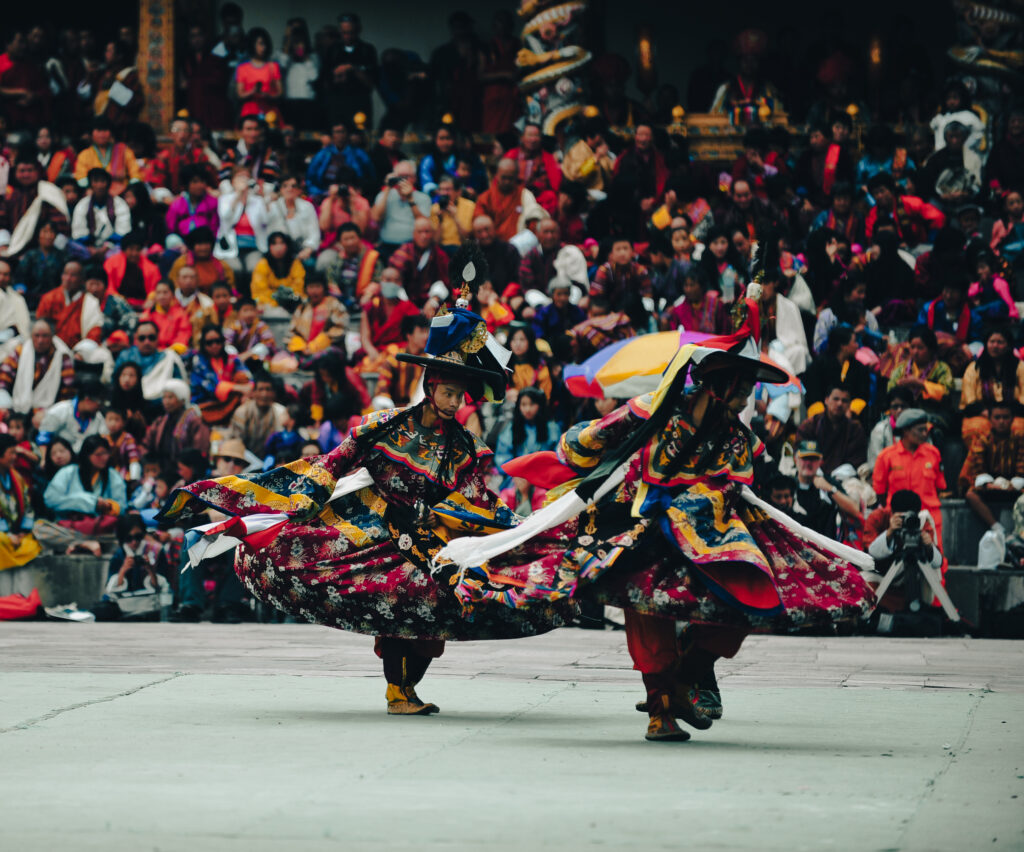
Community and Spiritual Significance
For the Bhutanese people, Tsechu is more than just a festival; it is a time of spiritual renewal, community bonding, and cultural expression. Families and communities come together to witness the dances, receive blessings, and engage in prayer and meditation. The festival fosters a sense of unity and shared identity, reinforcing the values and traditions that have been passed down through generations.
Blessings and Merit
Attending Tsechu is believed to bestow great merit and blessings. The dances are not merely performances but are considered acts of devotion and offerings to the deities. By participating in the festival, either as a performer or spectator, individuals accumulate spiritual merit, which is thought to aid in their journey towards enlightenment.
Social and Economic Impact
Tsechu also plays a significant role in the social and economic life of Bhutan. It attracts tourists from around the world, contributing to the country’s tourism industry. The influx of visitors during the festival season provides economic opportunities for local businesses, artisans, and hoteliers. Moreover, the festival promotes cultural exchange and understanding, showcasing Bhutan’s unique heritage to a global audience.
Conclusion
Tsechu is a living testament to Bhutan’s rich cultural and religious heritage, offering a profound and captivating experience for both locals and visitors alike. Through its vibrant dances, intricate rituals, and deep spiritual significance, the festival embodies the essence of Bhutanese identity and continues to play a vital role in the preservation and celebration of the country’s timeless traditions.
